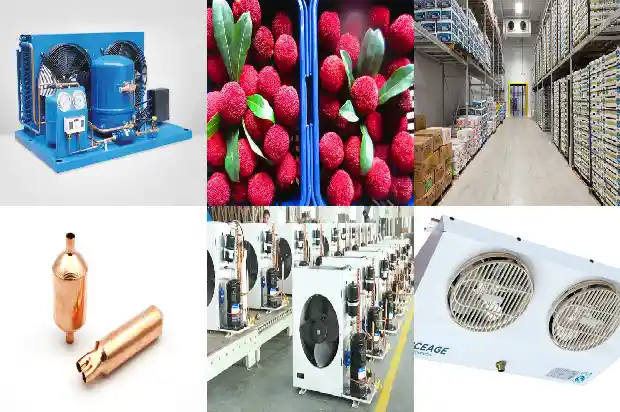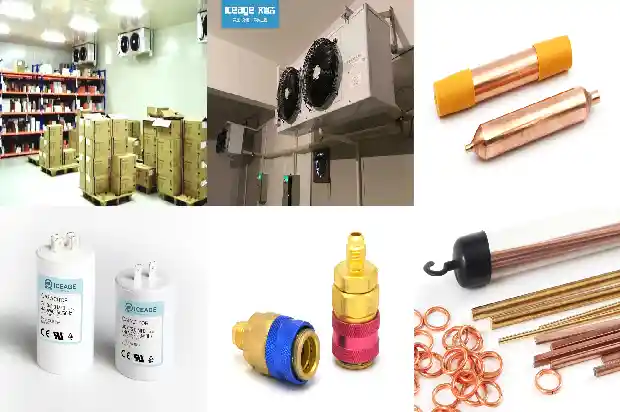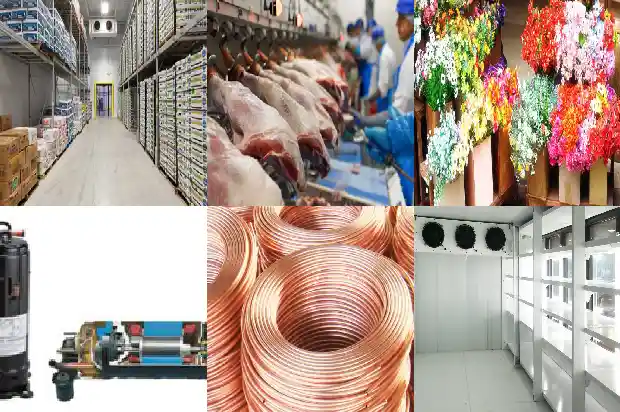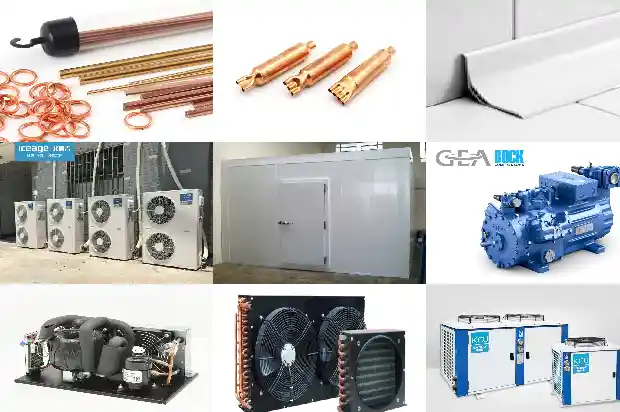Common faults in refrigeration system (discharge temperature and pressure)
2024-09-04
- Reasons for excessive exhaust temperature mainly include the following: high return gas temperature, large motor heating capacity, high compression ratio, high condensing pressure, adiabatic index of refrigerant, and improper selection of refrigerant.
For an R22 compressor, when the evaporation temperature decreases from -5°C to -40°C, the general COP will be reduced by four times, while other parameters change little, and the temperature rise of the gas in the motor cavity will increase by three to four times.
Since the exhaust temperature can increase by 1 - 1.3°C for every 1°C increase in the cylinder suction temperature. Therefore, when the evaporation temperature decreases from -5°C to -40°C, the exhaust temperature will rise by about 30 - 40°C.
For a semi-hermetic compressor with return gas cooling, the temperature rise range of the refrigerant in the motor cavity is roughly between 15 - 45°C. In an air-cooled (air-cooled) compressor, the refrigerant does not pass through the winding, so there is no motor heating problem.
The exhaust temperature is greatly affected by the compression ratio (condensing pressure/evaporation pressure, generally 4). Under normal circumstances, the exhaust pressure of the compressor is very close to the condensing pressure. When the condensing pressure rises, the exhaust temperature of the compressor also rises.
The greater the compression ratio, the higher the exhaust temperature and the smaller the volumetric efficiency, thus reducing the cooling capacity of the compressor and increasing power consumption.
Reducing the compression ratio can significantly reduce the exhaust temperature. Specific methods include increasing the suction pressure and reducing the exhaust pressure. The suction pressure is determined by the evaporation pressure and the resistance of the suction pipeline.
Increasing the evaporation temperature can effectively increase the suction pressure, rapidly reduce the compression ratio, and thus reduce the exhaust temperature.
Practice shows that reducing the exhaust temperature by increasing the suction pressure is simpler and more effective than other methods. - The main reason for excessive exhaust pressure is too high condensing pressure (there is air in the system; too much refrigerant is charged and the liquid occupies the effective condensation area; insufficient heat dissipation area of the condenser, fouling, insufficient cooling air volume or water volume, too high temperature of cooling water or air, etc.). Selecting an appropriate condensation area and maintaining sufficient flow of cooling medium is very important.

- Low exhaust pressure, although its phenomenon is manifested at the high-pressure end, the reasons mostly occur at the low-pressure end.
Reasons:
(1) Ice blockage or dirt blockage of the expansion valve and blockage of the filter will inevitably cause both suction and exhaust pressures to drop;
(2) Insufficient refrigerant charge;
(3) Blockage of the expansion valve orifice, reduction or even cessation of liquid supply, and at this time both suction and exhaust pressures are reduced. - Insufficient exhaust volume is mainly compared with the designed gas volume of the compressor. If the suction pipe of the compressor is too long and the pipe diameter is too small, the suction resistance will increase, affecting the suction volume and thus reducing the exhaust volume.
Related Articles
- Basic Faults and Preventive Maintenance of Water - cooled Units
- Composition and Common Faults of Screw Refrigeration Compressors
- Common Faults and Solutions of Central Air - conditioning Chiller Units
- Common Faults of Industrial Chillers
- Common Faults and Corresponding Solutions of Chillers During Use
- Analysis and Troubleshooting of Common Faults in Air - source Heat Pumps
- Maintenance Methods for Faults in Screw Refrigeration Air - conditioner Compressors
- Common Faults and Troubleshooting Methods of the Moving Mechanism of Piston Compressors
- Analysis of Common Faults in Compressor Overcurrent and Burnout
- What are the reasons for the inactivity of the automotive air conditioning compressor? What are the common faults?
- Common Faults of HVAC Fan Coil Units
- Common Operating Faults and Treatment Methods of Centrifugal Compressors
- Common Four Faults and Replacement Methods of Scroll Compressor
- Analysis of Refrigeration Compressor Motor Faults
- Analysis and Treatment of Common Low-Pressure Faults in Chillers
- Analysis and Treatment of Common Low Pressure Faults in Chillers
- Common Faults of Screw Compressor
- Have You Encountered the Three Common Problems of Refrigeration Compressors?
